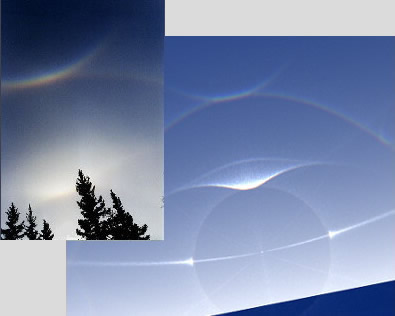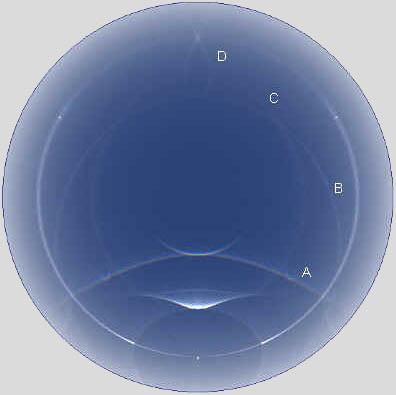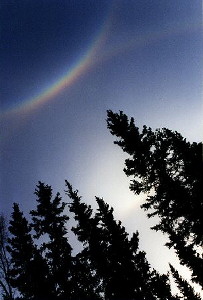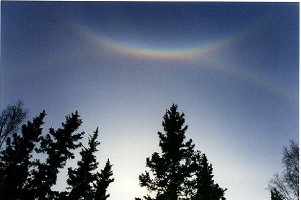 |
 |
|
Aurora photographer Jan
Curtis used a 35 mm lens to obtain the image at left.
It captures the immensity of the halos better than wide angle
and fisheye lenses.
Moving upwards from the weak 22° halo, there is a fine
upper tangent arc, a suncave Parry arc, a supralateral arc
(or possibly a 46° circular halo) and a circumzenithal
arc.
The HaloSim simulation uses randomly oriented columns, plate
crystals, singly oriented and Parry oriented columns.
The great Alaska display of 1999 lasted over two and a half
hours and was described by Walter Tape as perhaps the best
display he had witnessed in the Northern Hemisphere. Cirrostratus
clouds produced the display and the crystals were of fine
quality and well oriented. Crystal tilts in the simulations
had a standard deviation of only half a degree. 
The brightly coloured arc A in the HaloSim simulation at
right was likely a supralateral arc rather than a 46° halo
fragment because, in the display, other arcs from singly
oriented columns were strong whereas the 22° halo
from poorly oriented crystals was weak.
A subhelic arc, B, Wegener arc, C, and a Tricker oval, D,
were visible. These are all very rare halos generated by singly
oriented column crystals.
Infralateral arcs (joining the supralateral arcs at the parhelic
circle) were not visible: the display was not well developed
in that region.
|
 |
|
Finally,
two more images from Jan Curtis showing the spectacular
circumzenithal and supralateral arcs.
 |
|
|
|
|